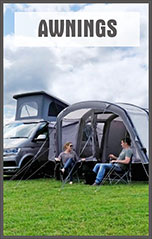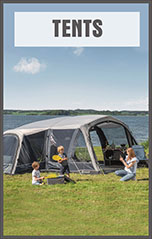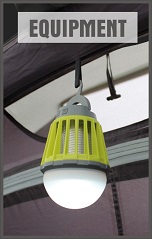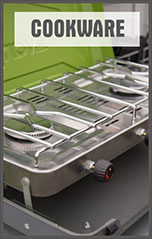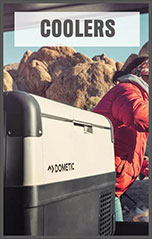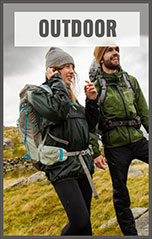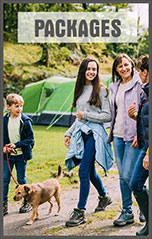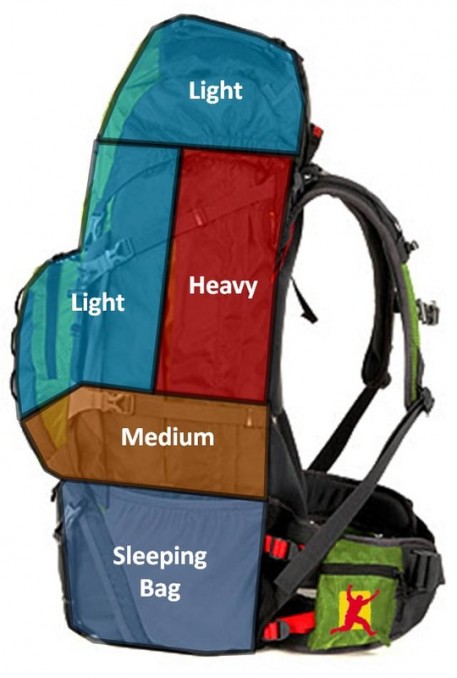Expert Advice on Travel Bags
Guide to packing a backpack
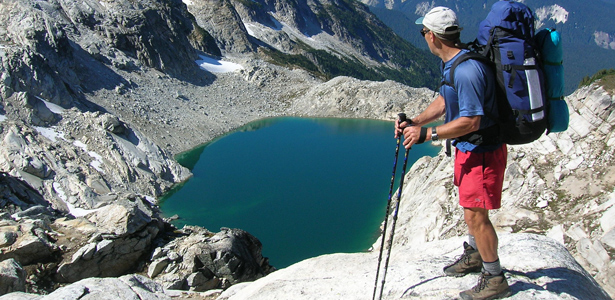
Many people go into packing their backpack with no strategy in place. You may be thinking “You need a strategy for packing a bag?” Well as silly as it may sound, yes you do. Having a packing strategy in place will help improve your overall backpacking experience. Learning to organise your gear properly before loading your backpack will eliminate forgotten items and help you remove unnecessary luxuries. In addition, efficiently packing your backpack will give you more comfort, convenience and stability.
Step 1 – Choosing the correct backpack
Before putting anything into your bag, the first step is to ensure that you’re using the correct size bag for the amount of gear you are wanting to take. It’s important to find the line between unnecessary weight and certain luxuries for comfort. With today’s technology, backpacks are lighter and stronger than they have ever been, so upgrading an old backpack may be worth doing. Taking in to account the length of the trip will help you decide what size backpack to take. Note that for longer trips you will need to pack more clothes and more food.
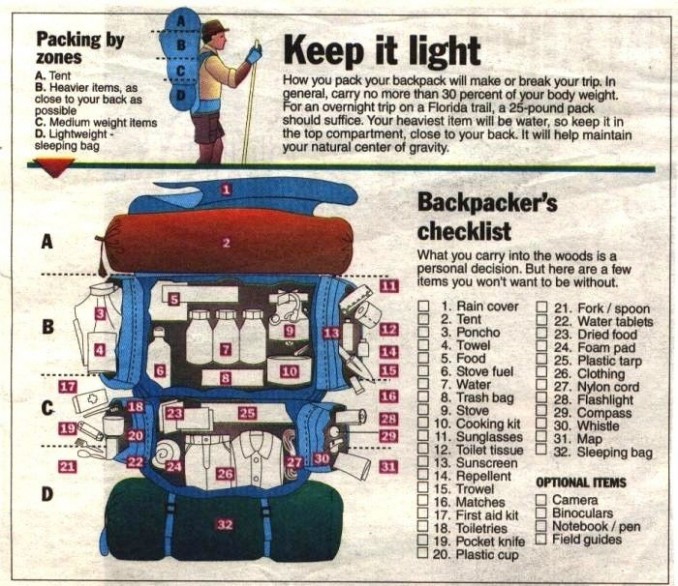
Step 2 – Organising what to take
In order to pack your backpack correctly, you may want to lay out everything on your floor and categorise items by weight, therefore making the backing process easier. Another good idea is to cluster similar items such as eating utensils and pots, this will make life easier when unpacking. A good tip is to put all toiletries and liquids in water tight bags to prevent spills.
If you are unsure of what you need to take, we have made a backpacking checklist.
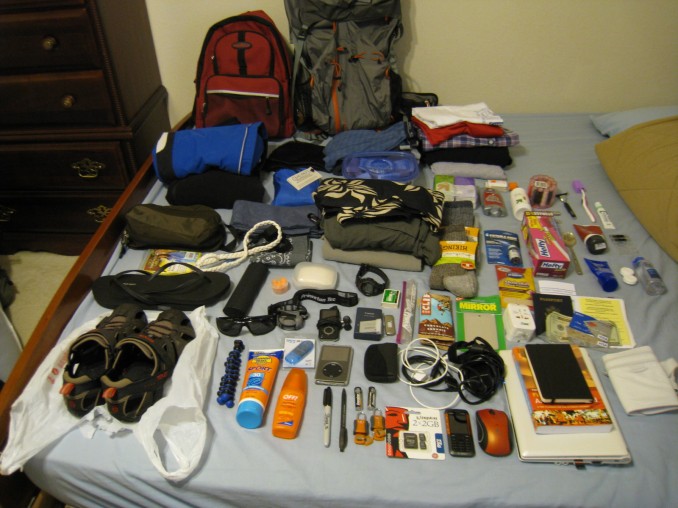
Step 3 – Packing
When loading your bag you must remember to follow the packing guidelines in the pictures above. Lightweight items should sit at the bottom of the bag, ideally your sleeping bag and other night-time supplies. After a good proportion of the lighter items have been packed, you need to pack the heavier items. As shown in the diagrams, the most effective place to put heavy items is midway down the backpack as close to the spine as possible. Then try to fill the rest of the backpack with medium/light weight items. Try to pack in a strategic way to avoid pulling out everything for an item that’s sitting at the bottom. For example, if the weather is forecasted rain, it would be a good idea to place your rain jacket at the top end of your bag, so if it does start to rain you’re not messing around trying to find it. Items that are good to have at the ready would be, rainwear, snack food, insect repellent and a headlamp.
There are many tips for making the best use of space when packing your backpack. Be sure to fill in any empty spaces with small compressible items and make use of the whole bag, i.e. pockets. For example, you can stuff a shirt inside a pot, put a roll of duct tape around your hiking poles, or remove your sleeping bag from its sack and stuff it around other gear. After your backpack is loaded, you need to tighten all straps to compact the backpack and to avoid items moving around.
If your intersted in backpacking, you may like our '8 Backpacking Mistakes People Make' blog post.
Step 4 – External attachments
If you have packed your backpack properly and have the right size bag for your trip then you should really need to add things on to your bag externally. However, you can come across awkward shaped items and limited space, so if this does happen you can always add items to the exterior of your backpack. This is something that I would recommend trying to avoid as it can unbalance your bag and potentially snag on things. Tents, roll mats and water bottles are the types of items to store externally.

